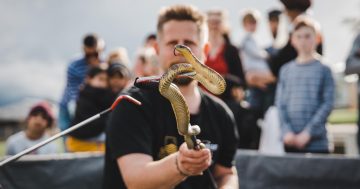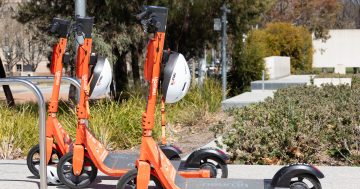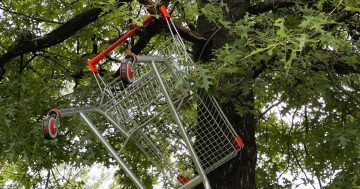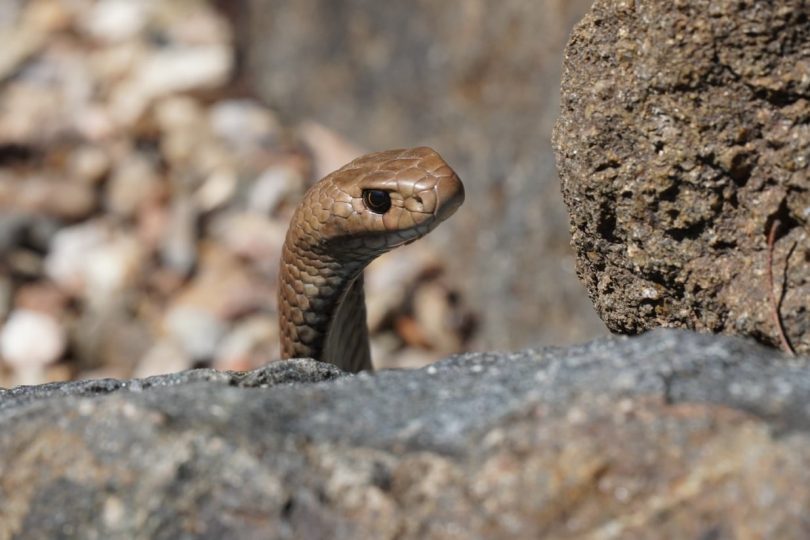
An eastern brown snake shows a classic ‘periscoping’ posture of its surrounding environment. Photo: Keith Kaney.
Gavin Smith loves all snakes, big and small, and during the past week he has handled an eastern brown snake blocking a drainpipe, before battling another brown snake behind a water tank.
It has been a busy snake season for snake removalists and catchers in Canberra, and when each snake is released into new bushland habitat, Gavin is always left wondering how they will fare.
As an associate professor in social science at the Australian National University and a would-be herpetologist, Gavin is also embarking on a slithery trail to unlock the world of snakes in a first-of-its-kind study in Canberra that will track the reptiles’ movements and harness a better understanding of them.
“The cool and wet conditions that have been followed by really nice periods of sunny weather are really bringing all the reptiles out,” he says in between callouts.
The study has received animal ethics approval from the ANU and a scientific licence from the ACT Government. Once the technology to track the snakes arrives, Gavin anticipates being able to learn more about how snakes interact with the urban environment in Canberra by early December.
His focus is on the eastern brown snake (Pseudonaja textilis) which is the dominant type of snake he captures in Canberra. Gavin calls them ‘lightning sticks’ for obvious reasons (see video below) and says the highly venomous snake is also very misunderstood. He says the study will help people understand how to exist with snakes rather than against them.
https://www.facebook.com/snakesandrescues/videos/1071071043368580
“This type of project hasn’t been done before in an urban landscape so it’s really exciting,” he says. “They have been studied in agricultural landscapes, but certainly not here in Canberra.
“Each time I capture an adult eastern brown snake, I’ll put the tracking technology either on or in the snake. Then we’ll go out into the field to release it. We’ll be able to follow up on its movement patterns and how that relates to the environment, as well as its size, sex and landscape.
“We have essentially created an urban landscape for snakes to exist and they’ve adapted to that very well.”
The study will be a pilot project during a three-year period involving at least six other people, including Professor Adrian Manning who will bring ecological and environmental science knowledge to the project. Gavin will also work with a scientist from Mulligans Flat, a veterinarian, other local snake catchers and his brother, who is an expert in spatial analysis that will help inform the landscape where snakes exist.
“It will take a couple of years and certainly at least a season to understand how the tracking technology works, but my main priority is to ensure the welfare of the snake,” says Gavin.
“My major goal is trying to understand the animal better while educating the public more about snakes and learning to live with them better, rather than just seeing them as these perennial pests that need to be removed.
“I’d really love it if people could see snakes in a slightly different way – not necessarily love them, but appreciate them as a really important part of the habitat.”
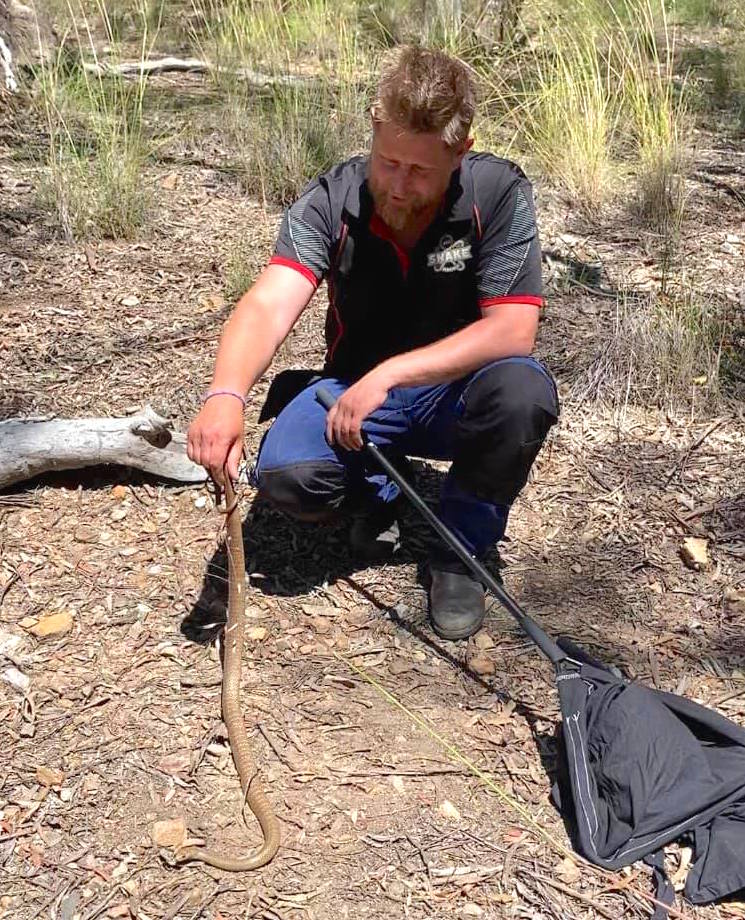
Gavin Smith releases another eastern brown snake into bushland near Canberra. Photo: Supplied.
Gavin says each time he releases a snake, he sees it into its new world but has no way of knowing if it is a better place.
“We have so much to learn about how snakes use the landscape, what temperature gradients they live in, what kinds of burrows they use, and how far they move, particularly after they have been translocated,” he says.
“We don’t really know what the implications are of moving a snake and I really care about that. That knowledge is powerful.
“This is not just about science, it’s also about public education as there’s so much we don’t know about snakes. A few snakes will have to deal with us tracking them for a while, but the benefits for us and the snake population will be significant.”
You can learn more about Gavin’s work on the ACT Snake Removals website, on Facebook or on Instagram.
Original Article published by Michael Weaver on The RiotACT.




